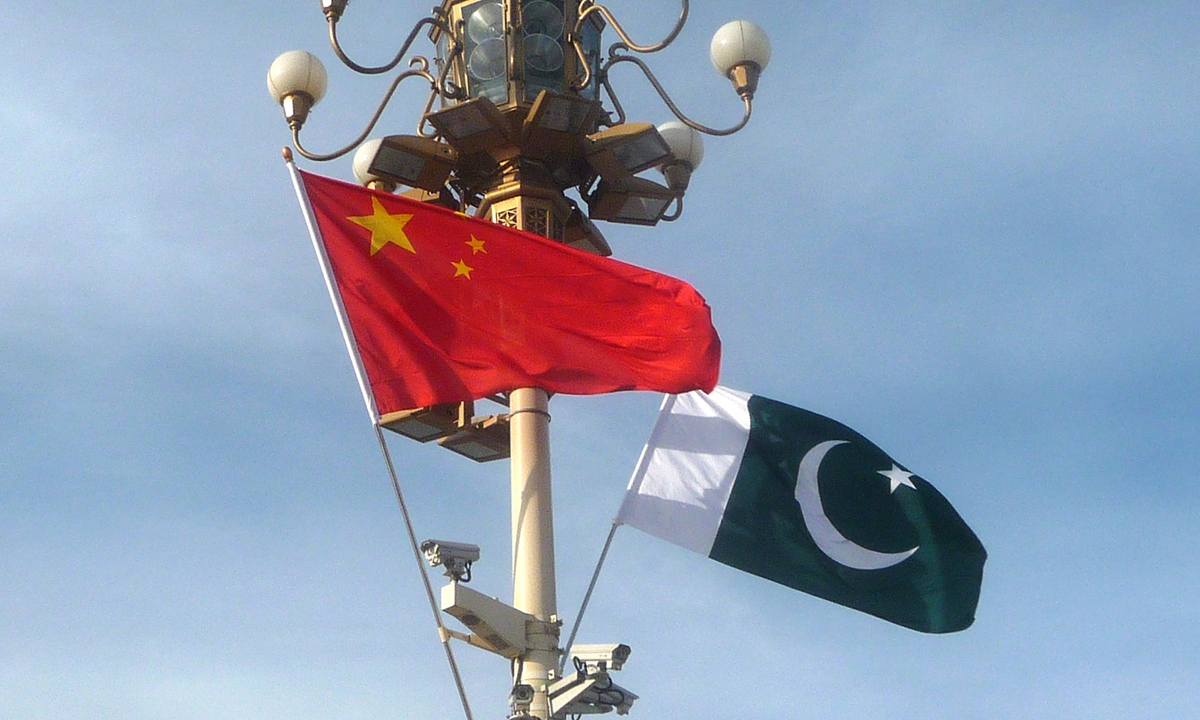
China Pakistan File photo:VCG
The first unit of the Chinese-built Suki Kinari Hydropower project in northwest Pakistan was connected to the power grid on Monday, the Xinhua News Agency reported, meaning the project, which was among the first under the China-Pakistan Economic Corridor (CPEC) framework, has taken the most critical step toward full commercial operation.
The launch of the landmark project, which is the largest overseas greenfield hydropower investment project by a Chinese enterprise, will further alleviate Pakistan's chronic electricity shortages, while injecting new impetus into the sustainable development of the regional economy, experts said.
The project's launch comes as some Western media outlets have intensified efforts to badmouth China-Pakistan cooperation, the CPEC in particular, and the China-proposed Belt and Road Initiative (BRI), by bringing up old issues such as debt, which they claim may disrupt future cooperation.
Construction of the project, funded and developed by Energy China, started in January 2017 with a total investment of about $1.962 billion. The power station features four impulse turbine units, with a total installed capacity of 884 megawatts and a total reservoir volume of 13.45 million cubic meters, according to Energy China.
All units of the power station will be put into operation by the end of August, the company said.
As a flagship project of the CPEC, the Suki Kinari Hydropower project boasts the largest impulse water turbine generator units and the deepest pressure shaft group in the world, meaning that it involved high construction standards.
The project will generate an average of 3.21 billion kilowatt-hours per year, saving about 1.28 million tons of standard coal annually and reducing carbon dioxide emissions by about 3.2 million tons.
More importantly, it will provide affordable, clean electricity to more than 1 million households in Pakistan.
Chinese experts said that the launch of this massive project is another milestone in the cooperation between China and Pakistan under the BRI. It serves as a living example of how the Chinese company has deeply participated in the sustainable development of Pakistan for the benefit of its social and economic development.
"Helping Pakistan deal with its energy shortage has been an important task under the development of the CPEC since the beginning... while the heavy reliance on imported coal and high international coal prices are among the issues that have troubled Pakistan.
"The hydropower station offers an alternative choice to resolve many of these problems due to its ecologically friendly, affordable and sustainable nature," Liu Zongyi, director of the Center for South Asia Studies at the Shanghai Institutes for International Studies, told the Global Times on Tuesday.
The launch is an important achievement in the new phase of the high-quality construction of the CPEC, which will further ease Pakistan's electricity crisis and provide tangible benefits to local living standards and economic development, Qian Feng, director of the research department at the National Strategy Institute at Tsinghua University, told the Global Times on Tuesday.
The launch comes amid negative coverage by foreign media outlets of China-Pakistan cooperation and the CPEC. One even used an intimidating headline saying that "China-Pakistan ties are at a crossroads," in hyping issues such as debt and security in the region.
"Such negative commentary is not new... it has been ongoing since the inception of the CPEC," Qian said. He noted that these persistent negative claims by Western media outlets can underscore the critical importance of China-Pakistan cooperation in further building a China-Pakistan community with a shared future.
China is globally recognized for its infrastructure capabilities. In terms of financing, projects under the BRI have benefited from favorable loans, which have significantly motivated Chinese enterprises to participate in development and construction.
This financing also helped Pakistan overcome funding constraints that are common among developing countries, experts said.
As a key flagship project under the BRI, the CPEC has brought $25.4 billion in direct investment to Pakistan, created 236,000 jobs, built 510 kilometers of highways and generated more than 8,000 megawatts of electricity, among other achievements.
All these have significantly boosted Pakistan's social and economic development, according to the Chinese Embassy in Pakistan.
As the CPEC enters a new phase in 2024, its 11th year, experts said that cooperation between China and Pakistan under the BRI will be further strengthened in sectors where they have complementary advantages.
These sectors could include new energy, manufacturing and cross-border e-commerce, to further enhance regional connectivity and support Pakistan's sustainable development and improvement of livelihoods.




